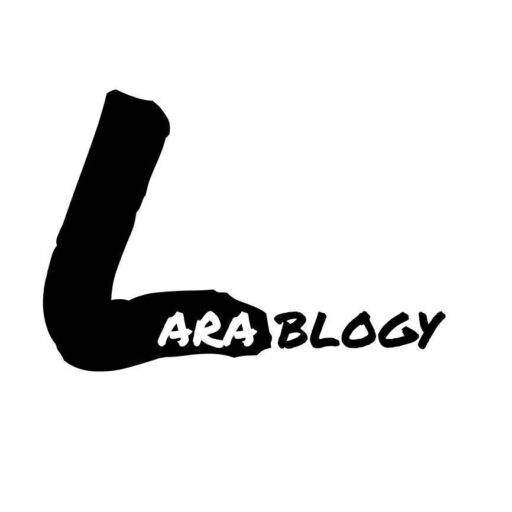The Critical Link Between Early Dyslexia Assessment and Effective Reading Intervention Outcomes
Early identification of dyslexia fundamentally changes a child’s educational trajectory, yet many students struggle for years before receiving proper assessment and support. The difference between early intervention and delayed identification can mean the distinction between a confident reader and a frustrated learner who develops anxiety around academic tasks. Research consistently demonstrates that when dyslexia is identified early and paired with appropriate intervention, students achieve dramatically better outcomes. Understanding this critical connection helps parents and educators recognize why comprehensive assessment for dyslexia reading intervention serves as the cornerstone of effective literacy support.
The Real Cost of Waiting Too Long
Picture a bright second-grader who loves science but dreads reading time. She memorizes books to hide her struggle, develops stomachaches before school, and starts believing she’s “stupid” despite understanding complex concepts when they’re explained aloud. This scenario plays out in thousands of classrooms because adults miss or dismiss early warning signs of dyslexia.
Dyslexia affects 15-20% of the population, making it incredibly common. Yet most students don’t receive identification until fourth grade or later—if at all. By then, they’ve experienced years of failure, developed anxiety around academics, and missed the optimal window when intervention is most effective. The academic impact cascades across every subject requiring reading, from word problems in math to science textbooks.
The emotional toll often exceeds the academic struggles. Children internalize their difficulties as personal failures. They watch peers read effortlessly while they labor over simple words. Without understanding why reading is so hard, they conclude they’re not smart enough. This damaged self-concept affects choices and achievement throughout life.
Warning Signs Parents and Teachers Often Miss Before School Even Starts
Dyslexia indicators often appear during preschool years, though they’re frequently dismissed as developmental differences. Children who struggle learning nursery rhymes or consistently mix up similar-sounding words may be showing early phonological processing difficulties. When a four-year-old calls a tornado a “volcano” repeatedly, it might signal more than cute mispronunciation.
Family history provides crucial clues since dyslexia has strong genetic components. If parents, siblings, or extended family struggled with reading, children face higher risk. Fine motor challenges like difficulty learning to tie shoes or use utensils properly can indicate the sequencing difficulties that also affect reading. Persistent confusion about left and right, yesterday and tomorrow, or following multi-step directions beyond typical ages warrants attention.
When Reading Instruction Begins
Once formal schooling starts, warning signs become more specific but are still often misinterpreted. By the end of kindergarten, most children can rhyme and identify beginning sounds in words. Those who can’t may have the phonological awareness deficits central to dyslexia. Letter-sound relationships that peers master quickly may remain confusing despite repeated instruction and practice.
Behavioral changes during literacy activities provide important clues. Children who suddenly need bathroom breaks during reading time, create disruptions, or develop physical symptoms are communicating distress. Spelling attempts that don’t match the sounds in words—writing “bt” for “butterfly” or different spellings of the same word in one sentence—reveal underlying processing issues.
The most telling sign is often the gap between obvious intelligence and reading ability. Children who contribute brilliantly to discussions but can’t read the same material independently aren’t lazy or careless. They’re showing the classic dyslexia pattern of strong thinking skills masked by weak reading skills.
What Comprehensive Assessment Actually Reveals
Too many schools rely on brief screenings that only identify students who’ve already fallen far behind. Comprehensive dyslexia assessment digs deeper, examining the cognitive processes underlying reading to understand exactly where and why the system breaks down.
Intellectual assessment establishes that reading problems aren’t due to overall cognitive limitations. Many dyslexic students show superior abilities in reasoning, problem-solving, or spatial thinking. These strengths often go unrecognized when academic struggles dominate attention. Identifying them proves crucial for maintaining self-esteem and planning interventions that build on abilities while addressing weaknesses.
The heart of dyslexia assessment examines specific reading-related processes. Phonological awareness testing reveals whether students can manipulate the sound structure of language—deleting sounds from words, blending sounds together, or recognizing rhymes. Rapid naming tests measure how quickly students can retrieve familiar information, predicting reading fluency. Working memory assessment shows whether students can hold information while processing it, essential for decoding longer words.
Academic testing goes beyond grade-level achievement to analyze error patterns. Reading nonsense words reveals pure decoding ability without sight word compensation. Spelling analysis shows which sound-symbol relationships students understand versus guess at. Writing samples demonstrate how reading difficulties impact expression. Together, these measures create detailed learning profiles that guide intervention planning.
From Test Results to Teaching Solutions
Generic reading support wastes precious time for dyslexic students. Assessment results enable targeted intervention addressing specific deficits. A student with severe phonological awareness deficits needs intensive work on sound manipulation before traditional phonics instruction makes sense. Someone with adequate decoding but slow processing requires fluency-focused intervention emphasizing repeated reading and automaticity.
Assessment also reveals how to teach, not just what to teach. Students with working memory weaknesses need information broken into smaller chunks with frequent review. Those with rapid naming deficits benefit from extended practice with high-frequency words. Processing speed issues indicate needs for extended time and reduced volume rather than simplified content.
Initial assessment establishes baselines for measuring progress. Without starting points, teams can’t determine whether interventions work. Regular progress monitoring using similar brief measures ensures students receive appropriate instruction intensity. When expected growth doesn’t occur, assessment data guides decisions about increasing time, changing methods, or addressing different skills.
Breaking Through Barriers to Assessment
Despite clear benefits, many students wait years for comprehensive assessment. Schools often prefer “wait and see” approaches, hoping maturity will resolve reading difficulties. Overwhelmed school psychologists face long waitlists and may prioritize students with behavioral problems over quiet struggling readers. Some schools focus assessments narrowly on determining special education eligibility rather than understanding learning profiles.
Parents must understand their rights and advocate effectively. Federal law requires schools to evaluate students suspected of having disabilities that affect learning. Putting concerns in writing triggers legal timelines for response. Documenting specific struggles with work samples and communication records strengthens requests. When schools decline or delay, parents can request independent evaluations or invoke due process protections.
Private assessment offers an alternative when school evaluations prove inadequate or unavailable. Comprehensive private evaluations often include more extensive testing and detailed recommendations. However, costs ranging from $2,000-5,000 create equity issues. Some providers offer sliding fees or payment plans. Educational assessments rarely receive insurance coverage, though related medical diagnoses might qualify. Parents must research evaluator qualifications carefully, ensuring expertise specifically in dyslexia and learning disabilities.
Why Timing Changes Everything
Research consistently shows intervention effectiveness decreases with age while intensity requirements increase. Kindergarten students might overcome mild phonological deficits with 30 minutes of daily targeted instruction. By fourth grade, closing the same gap could require 90 minutes of intensive intervention over multiple years.
Beyond efficiency, early identification prevents cascading negative effects. Young children who receive appropriate intervention maintain positive associations with school and learning. They develop coping strategies and self-advocacy skills proactively. Most importantly, they understand their challenges stem from brain differences requiring different instruction, not personal inadequacy.
Late identification often means years of developed avoidance behaviors, damaged self-concept, and widening academic gaps. Students miss foundational knowledge in content areas while struggling with reading. Social relationships suffer when students can’t participate fully in classroom activities. Career aspirations narrow as students avoid paths requiring extensive reading.
The Power of Finally Understanding
Comprehensive assessment provides more than labels or qualification for services. Families describe profound relief when evaluation explains their child’s struggles. Students experience validation learning their difficulties have neurological basis. The shame of feeling “stupid” transforms into understanding of learning differences.
Quality assessment reports become blueprints for success. They document accommodation needs like extended time or assistive technology access. They recommend specific intervention approaches proven effective for similar profiles. They highlight cognitive strengths that predict success in various fields. Most importantly, they shift focus from limitations to possibilities.
This transformation from mystery to understanding empowers everyone involved. Parents stop battling over homework and start providing targeted support. Teachers adjust instruction based on how students learn rather than forcing mismatched methods. Students develop self-advocacy skills and resilience. The entire trajectory changes from escalating frustration to systematic progress.
Additional Resources
International Dyslexia Association – Knowledge and Practice Standards – The leading authority providing comprehensive standards for dyslexia assessment and intervention, including detailed fact sheets on evaluation components and qualified professionals
National Center for Learning Disabilities – A trusted resource offering free dyslexia screening tools, assessment guides, and information about educational rights for families navigating the evaluation process





